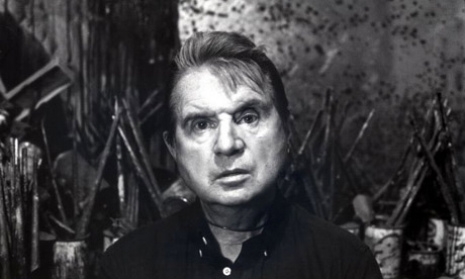
Francis Bacon occasionally settled outstanding food and drinks bills with one of his paintings. It didn’t always satisfy the creditor. One London restaurateur, not taken with the Irishman’s work, sold each painting on as quickly as he received them. What then would this dear gentleman make of the news that a single portrait by Bacon is expected to reach £18m at auction?
Described as “seductive and sexually charged,” the painting shows one of Bacon’s famous muses, Henrietta Moraes, slightly tipsy, lying naked on a rumpled, stained bed, in some Soho apartment. The image was based on a series of photographs Bacon commissioned from John Deakin—Vogue snapper, Colony Room habituee and chronic alcoholic. Deakin always ensured he took enough intimate photos to hock around as under-the-counter porn at ten bob a print.
Though he lived an exclusively gay lifestyle, women were central to Bacon: they were his muses, who loved, nurtured, inspired and developed his talents. Indeed, Bacon surrounded himself with strong women—almost replacements to the mother who had been callously indifferent to her son’s brutal beatings, when caught as a child dressing-up in her clothes and flirting with the stable boys.
In moments of fancy, I think Bacon had the hawk-like look of Joan Hickson’s Miss Marple, especially when all glammed-up for a night on the piss. I can imagine him solving an Agatha Christie, or board game mystery - Professor Plum, in the library, with a candle-stick - for there was the shadow of the country house and jolly maiden aunt (doling out make-up tips to younger girls, and at night reading Mrs Beeton recipes in bed) at the heart of him.
These grim childhood beatings opened Francis up to the delights of S&M: he claimed he fucked all the grooms who had horse-whipped him; said he fantasized about his father—whose purple face screams from so many Popes or glowers from under blackened umbrellas; and had a life of violent relationships with his lovers.
Even so, it was the women who shaped him.
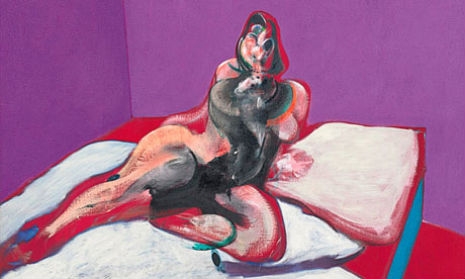
“Portrait of Henrietta Moraes” (1963)
His childhood Nanny, Jessie Lightfoot—her face also superimposed onto Bacon’s Popes, as the bloodied, pince-nezed woman from Eisenstein’s Battleship Potempkin—helped establish Francis as an artist, and lived with him until her death in 1951.
Jessie cooked, cleaned, and acted as Bacon’s pimp, vetting all his potential clients who responded to his suggestive advert for a job as a “gentleman’s gentleman.” Together they ran an illegal gambling den, which helped finance the young artist’s paints and canvases . When she died, Bacon was so distraught he sold the house they shared, and all her belongings, rather than be haunted by her absence.
Bacon’s second muse was Muriel Belcher, the gregarious owner of the Colony Club, that infamous den of drunks, artists and ne’er-do-wells, whose lives tell the story of London’s bohemia during a large part of the second half of the twentieth century.
Belcher was Jewish and a lesbian which, by her own admission, was a volatile combination that informed her brutal view of life—one that Bacon soon adopted as his own. Thinking the young artist was both talented and a cock-tease, she decided to be his patron. Belcher paid Bacon £10 a week and all the booze he could drink, on condition he brought all his well-off clients into her club. It was a mutually rewarding relationship that kept both in cash and booze.
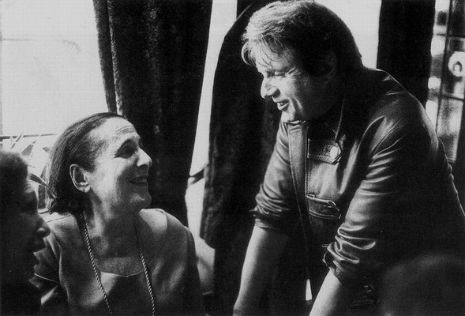
Muriel Belcher and Francis Bacon
Belcher was notorious for her foul tongue, and addressed her male clientele as “Miss,” “Mary” or “cunty,” and was described by Christopher Hitchens as “arguably the rudest person in England.” However, Francis had a special place in her affections and she dubbed him “daughter.” In later years, Bacon would stand the bar a round of drinks saying:
“Champagne for my real friends. Real pain for my sham friends.”
His third muse was Henrietta Moraes, who was said to have “intuitively understood Bacon’s expectations and needs as an artist and posed in the most sinuous and revealing ways.” Bacon paid John Deakin to photograph her—one of the resulting portraits is set to break new records at auction.
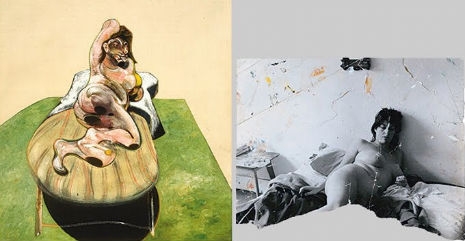
In her autobiography, Moraes claimed Bacon’s portraits her essence and had a great understanding of the feminine personality. Yet, the toll of working and carousing with Bacon became too much for the young model, and she soon fled with her children to live a quieter life in a caravan in Ireland. In later years, Moraes, who had been married to the poet Dom Moraes, returned to London and formed a relationship with artist Maggi Hambling, before her untimely death in 2000.
Bacon’s next favored muse was Isabel Rawsthorne, who was an artist in her own right, and had been a lover to the sculptor Jacob Epstein with whom she had a child. Rawsthorne had also been a mistress to another sculptor, Giacometti. Unlike Bacon’s other women, Isabel would not only share his life but his bed.
Perhaps part of the attraction for Bacon, was that Rawsthorne had once captured the imagination of Picasso, who had painted her five times. Picasso was Bacon’s favorite artist. Rawsthorne’s proximity to the great man was too alluring not to resist. It led to a strong, intimate and binding relationship between the pair.
Bacon claimed there was mutual sexual chemistry between them. He admired her intelligence and strong, almost masculine looks. She approached him as an equal. For Isabel it was another potential lover; for Bacon, she was the second woman with whom he had sex - the first had been a prostitute, who had eaten chips during their love-making.
Bacon developed his technique as an artist with his portraits of Rawsthorne, widening his palette, and using blues, greys and purples in his portraits of her.
One other women has still to be mentioned. One who spent her life promoting Francis across the world. This was Valerie Beston of the Marlborough Gallery, who handled all of Bacon’s work throughout his life. It has been said Valerie was in love with Bacon, for she did everything to please him, from paying his debts, to buying his clothes and food. It could be said she acted as his unacknowledged wife.
A romantic relationship between the two was never happened. However, out of all the women who helped and influenced Bacon, it was Beston who enabled his international success.
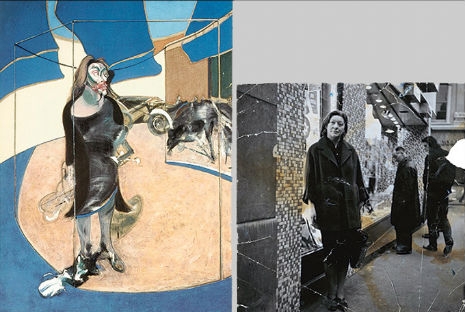
Isabel Rawsthorne by Francis Bacon and John Deakin
Previously on Dangerous Minds
Notes towards a portrait of Francis Bacon